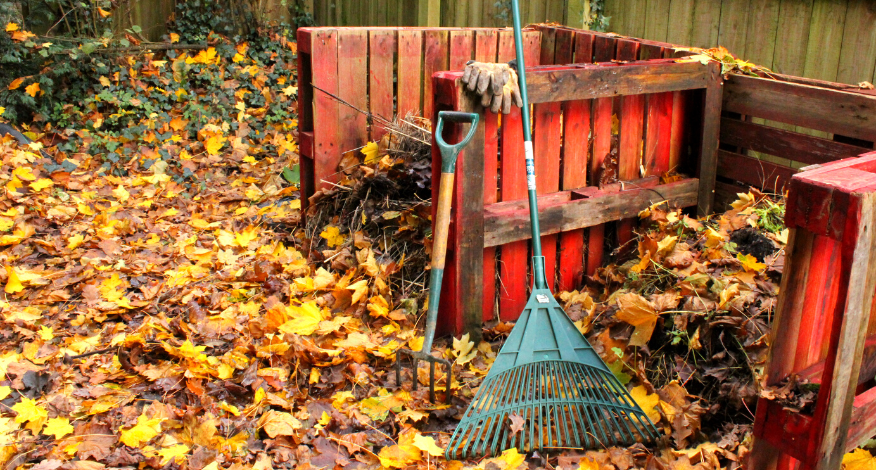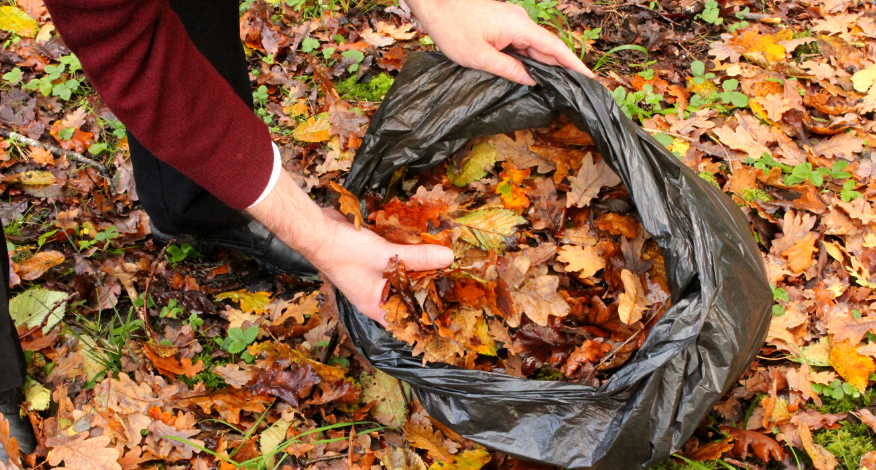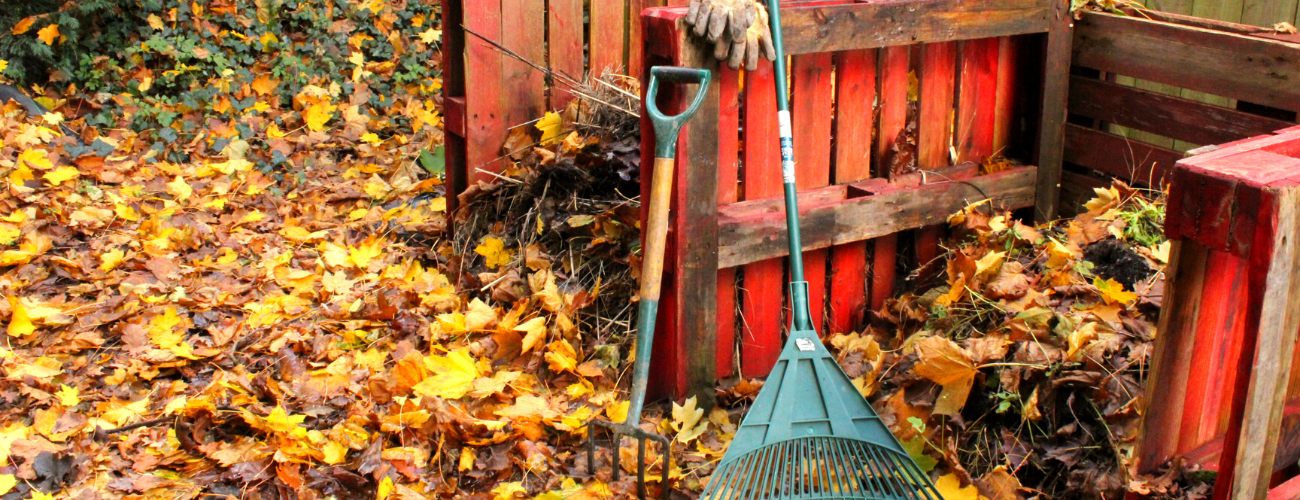
What are the benefits of composting?
Every garden should have a compost heap, however small. The decomposing vegetation provides a home for millions of soil organisms that keep your garden healthy. Returning the resulting garden compost to your borders opens the soil, improves structure and drainage and helps soils hold water and nutrients.
What are the best types of composter?
You will find many different types of compost bins at your local garden centre.
First consider the size of your composter. This will depend on the size of your garden. Too large and it is difficult to fill and get the natural composting process started, too small and you will soon find you need more space.
Plastic bins are useful in a small garden. However, many plastic composters suggest that you can regularly add garden material to the top of the bin, while shovelling lovely home made compost from the bottom. In practice this is unrealistic. The bin needs to be filled and left to rot down so two bins are ideal – one left to rot down while the other is being filled. This type of bin is designed to let a small amount of air through the bottom while a lid keeps out the heavy winter rain and retains the heat.
‘Hotbins’ are generally made from expanded foam with extravagant claims of crumbly compost within sixty days to ninety days. They are expensive and can be difficult to maintain the balance of material required for speedy composting.
The best composter is essentially a wooden box with slatted sides. This allows sufficient air to circulate through the heap, while retaining enough moisture within the box to enable the vegetation to rot fully, right to the edge. The front slats can often be removed or added for ease of access. Ideally, you need two boxes so one can be left to rot down while the other is being filled.
Rotary composters, also known as compost tumblers, are often expensive and quite small. The design enables the gardener to turn the compost bin using a handle, which is useful if you are unable to turn your compost heap by hand. This speeds initial composting but the final result is often disappointing.
Worms feed on organic matter, breaking it down and accelerating the composting process. Introducing worms into your compost heap produces a superior compost for soil conditioning and feeding. Making a wormery has fallen in popularity as it isn’t as easy as it sounds. It is essential that you use the correct variety of worms called Tiger worms, which are only active above 45°F (7°C) and will die in freezing weather.

How to make a compost heap
Prepare your compost heap by siting the bin on an earth base to allow access for soil organisms. Choose a position that is not subject to extreme temperatures – a light shady spot is ideal.
The secret is to achieve the correct mix of materials. Aim for 25-50% green vegetation to woody material. To compost well, you need a mix of with soft green vegetation with woody material (which can be supplemented with bark chippings, straw, crumpled up paper or shredded cardboard).
Woody material will decompose more quickly if shredded. If you do not have a shredder, a similar effect can be achieved by laying on the ground an running over with a rotary lawnmower. Alternatively cut to 10cm (4”) lengths to aid composting. Animal manures and used bedding from rabbits and chickens can be incorporated into the compost bin.

How to maintain a compost heap – the four golden rules
- Air circulation is vital so never let your compost heap pack down solid. Without it, anaerobic bacteria will turn your green waste to a green slime that is useless for the garden. To prevent this, ensure to mix any soft green materials with more woody material (which can be supplemented with bark chippings, straw, crumpled up paper or shredded cardboard).
- Water is an essential compost ingredient. Generally there will be enough water from the green waste you have placed in your compost bin. However, at times compost may dry out, especially around the edges and will impede the composting process. It is therefore important to keep the compost heap moist (without getting too wet). Adding a compost accelerator will help maintain activity.
- Turning the heap regularly will considerably speed the composting process. This doesn’t mean you can’t produce good compost with less turning (or without any turning at all) as long as the heap stays aerated – it just takes longer. Turning consists of emptying the bin, mixing and refilling.
- Covering the compost heap prevents excessive rainfall from waterlogging the compost heap, removing the air circulation and forcing out the beneficial bacteria required to break down the material. It also helps retain the heat required for the composting process.

How long does it take to make compost?
A compost heap takes from six months to two years to create lovely, sweet smelling compost. Not all the material in the heap will break down fully. Add any partly decomposed vegetation to the next batch of composting. A compost accelerator such as Vitax Compost Maker will speed up the process.
How long does it take to compost vegetable waste?
Meat, fish and cooked food scraps should be avoided as these will attract rats. Other vegetable waste can be mixed into the heap along with other soft green materials, mixed with at least 50% woody materials which can be supplemented by shredded paper, cardboard and straw.
How quickly can you make compost?
The amount of compost you can make in a year depends on the type of material you use, the mix of woody and green material and to a much greater extent, the weather. In a hot year, you should get two full bins – one in early summer and one in late autumn.
What will make compost break down faster?
A compost accelerator increases the speed of the breakdown of garden and kitchen waste.
What are compost accelerators and activators?
Compost accelerators and activators can be added to the compost heap to speed up the composting process. Products such as Vitax Compost Maker consist of ammonium sulphate and ground limestone. This is because the bacteria in the compost heap require nitrogen as a fuel. Adding ground limestone is not essential but keeps the compost ‘sweet’ and helps neutralise acidity which quickens the composting process. This is especially useful in autumn and winter when more woody carbon rich vegetation is added.
You don’t need much to aid the process. A light sprinkling every 15-30cm (9-12”) is all that is required.

How long does it take to compost leaves?
Leaves are slow to rot down because they contain lignin. The composting process is quite different from the traditional compost heap which relies on bacteria to break down the organic matter. Leaves are broken down by fungi which takes a year or two to create lovely friable leafmould.
You can create small quantities of leafmould by filling a black bin liner, moistening the leaves then loosely tying the top and piercing the bag a few times with a fork. Pop in a corner for a year or two before the leafmould is ready.
For larger quantities, use an open wire sided compost bin or make one with four stakes and chicken wire . Add the leaves as you collect them, treading down each time you add more. Moisten in dry weather and leave to rot down naturally. You will need at least two bins as it will take two to three years to rot down.
Why is my composting taking so long? Five top ‘Beginner Blunders’.
- Lack of air. Failure to turn the heap to maximise air circulation to speed up the activity of beneficial bacteria.
- Too wet. Cover the heap and keep it just moist. Mix in more woody material or crunched up paper balls to help air circulation.
- Wrong mix of materials. Maintain a maximum of 25-50% green vegetation to woody material.
- Woody material has not been shredded. Use a shredder or lay on the ground and run over with a rotary lawnmower. Alternatively cut to 10cm (4”) lengths to aid composting.
- The bacteria required to break down the material do not work well in extreme heat or cold. Move your bin to a sheltered, light shady spot in the garden.











